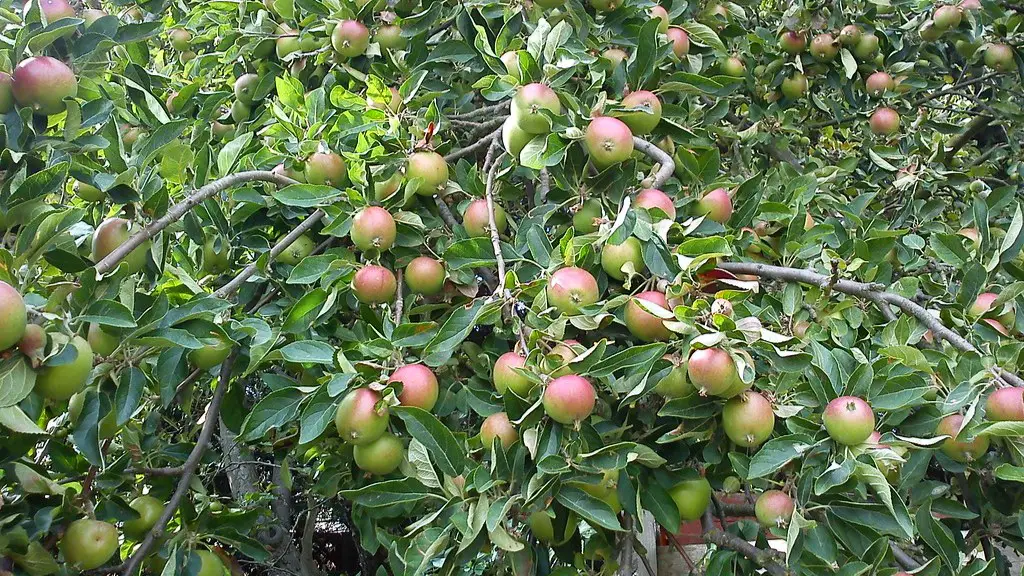Palm trees are one of the most recognizable and adored trees in the world, not only due to their majestic beauty, but also because of their resilient nature, even in the toughest of weather conditions. Despite their worldly reputation and robustness, they may still suffer from an array of problems and illnesses, one of which is browning of their leaves. This typically occurs as a result of overwatering, nutrient deficiency, climate change, pests, or disease, and it can be heartbreaking for those who either own a bought or planted their own palm tree.
Most often, overwatering is the primary cause of brown leaves. This happens when the root system is deprived of oxygen due to too much water, which in turn prevents it from being able to absorb the necessary nutrients from the soil and damages the root system. In addition, there may be a defeciency of micronutrients in the soil, such as magnesium, zinc, manganese, iron or boron, which are essential for a healthy palm tree.
Moreover, the recent climate change and global warming can also be considered one of the main culprits of a brown, unhealthy palm tree. This is due to an increase in heat and a decrease in rainfall, which can cause water stress, nutrient leaching and damage to the root system. In certain areas, the high temperatures combined with cold temperatures can create rapid transpiration and therefore, a lack of moisture and nourishment in the soil.
It is also possible for pests and diseases to cause browning of leaves, such as scale
insects, mites, fungus and other microorganisms which can attack the healthy plants, leading to discoloration, yellowing and droopy leaves. Unfortunately, when pest and disease infestations are not detected in time, or the root system is extensive, it is often necessary to take the drastic measure of cutting down the tree in order to prevent the spread of these illnesses.
In conclusion, brown palm leaves indicate that the tree is not healthy and needs some attention in order for it to survive. Whether it is a result of overwatering, climate change, nutrient deficiency, pests or diseases, it is best to identify the issue as soon as possible and take the necessary steps to restore its health and vigor.
Identifying Brown Palm Leaves
It is quite easy to identify brown, unhealthy leaves and usually, it will be the ones that start to yellow, droop down and become stiff, as well as leaves with spots, discoloration and bumps. Additionally, these leaves may also start to curl and stunt its growth.
Actions To Take
Once the cause of brown leaves is identified, there are a few simple steps to take in order to help restore the palm tree to its former glory. For example, in the case of overwatering, there is the possibility of removing some of the water, redistributing it and creating pathways for oxygen. Similarly, in the case of nutrient deficiency, it is possible to either use a fertilizer formulated for palms, apply natural materials such as fish meal, kelp or compost, or use compost tea for extra nourishment.
Expert Help
When it comes to restoring a palm tree to its optimal health, it is important to contact a local palm expert and listen to the advice they can offer. This is due to the fact that they will not only be able to properly diagnose the problem, but also recommend the right course of action, tools, materials and products in order to treat and improve the condition of the tree.
Prevention
In order to avoid brown palm trees, it is essential to properly care for them, taking into consideration the weather conditions and their need for nutrients from the soil. Additionally, regular maintenance is key, which entails keeping the tree clean and protected from pests, aggressively removing dead palm fronds, regularly moisturizing and fertilizing, and checking for signs of diseases.
Conclusion
Brown palm leaves are a clear sign of an unhealthy tree, begging for help. In order to restore it, it is essential to identify the cause first and then take the necessary steps to fix the problem. It is crucial to consult with an expert and get their opinion before implementing any changes, as well as to take the necessary preventive measures in order to avoid brown, unhealthy palm trees in the future.


